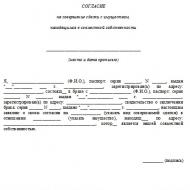
Foundation construction technology step by step. Foundation construction work What is included in foundation work
The correct sequence of operations when laying the foundation is the key to the strength of the house, outbuilding or garage. If the construction is carried out with your own hands, then knowledge of the technology of foundation work will allow you to avoid mistakes, and if you use the services of an involved team, you will be able to control its actions, check the calculation of the need for materials and the general estimate of the structure. Before concluding an agreement with builders, it is recommended to first study the average prices and provide possible options savings.
The work is carried out according to a project developed with reference to the area and taking into account the characteristics of the soil, relief, and climate in the development area. The list and complexity of operations depends on which foundation is taken as a basis: strip (monolithic or prefabricated), columnar, pile, slab. IN general view The technological process consists of the following stages.
1. Excavation.
These include leveling the area, constructing a pit, digging trenches or drilling holes for supports. First, the area is cleared of unnecessary vegetation: trees are uprooted, bushes are cut down, and the grass is mowed. General plan project onto nature: take the necessary measurements and make marks. If the site has a complex terrain, it is marked using slats and a level. Excavation of soil can be carried out manually or mechanized (the cost of the operation does not depend on this).
2. Pillow arrangement.
From this point (if the first operation is performed independently) they begin to calculate the cost for the tape. Sand and crushed stone are poured into the bottom of the trench, both layers are spilled with water and compacted in two steps with a tamper.
3. Construction of the foundation.
The amount of work depends on the type of foundation and is estimated in different units of measurement.
- The technical process of manufacturing a monolithic tape includes assembling the formwork, knitting the reinforcement structure, and pouring concrete. It is calculated in cubic meters and corresponds to the volume of the tape. If the company takes on the purchase of building materials and transportation costs, then concreting becomes 2.5-3 times more expensive. At the same time, construction time is reduced, continuous pouring of the concrete mixture becomes possible - thereby reducing the likelihood of cracks.
- A columnar foundation is erected by installing supports in pre-fabricated holes. First, formwork and reinforcing bars are installed in them, then the cement-sand mixture is poured. The work of installing a columnar base is expressed in the number of supports.
- Slab. This is the most expensive option, but it is optimal for areas with difficult soil (peat bogs, areas with high level groundwater). The reinforced concrete slab does not deform when the soil moves, but “floats” with it. Before concreting, waterproofing must be laid. Work is measured in cubic meters: to determine its volume, linear dimensions are multiplied.
- Pile. Now the most common screw piles, on which frame buildings or log cabins are most often placed. The cost of a pile depends on its length, and the price per linear meter (2500-5000 rubles) depends on the material and design.

4. Waterproofing.
When drawing up an estimate, it is advisable to include waterproofing in it: without reliable protection from moisture, the foundation quickly collapses, especially in areas with nearby groundwater. Rolled materials, which should be fused in two layers, are still popular among private developers. The injection method is more expensive: a penetrating hydroactive mixture helps seal the joints and pushes groundwater away from the structure.

average cost
The price largely depends on the region in which the house is planned to be built. The final costs are obtained by adding up the cost of each technological process and materials. By making a preliminary calculation, they simultaneously identify ways to reduce costs: for example, if the work does not require the use of special equipment, it can be done on your own.
Scientifically developed time standards and prices for foundation construction operations are set out in ENR collections. With these regulatory documents Usually an estimate is drawn up for the construction of a residential apartment building. The guideline for a private developer is the real price offers of local companies. Before choosing a contractor, it is proposed to compare the tariffs of several companies in Moscow and the capital region, given in the table.

| Name | Unit change | Price in various companies, rubles | |||
| Build the foundation | Fundament LTD | Leg.M | |||
| Digging a trench by hand, tamping | m3 | 1000 | 580 | 700 | |
| Drilling piles | PC. | 1000 | |||
| Preparing a compacted base with sand or crushed stone | m3 | 1100 | 590 | 250-450 | |
| Formwork, reinforcement, tape or slab concreting | m3 | 4000 | 3700-4200 | 3000-3500 | |
| Foundation insulation | m2 | 150 | 120 | ||
| Waterproofing (one layer) | m2 | 360 | 360 | ||
The cost is calculated by multiplying the corresponding volume by the price. After comparing tariffs for individual operations, you should find out the cost of the entire complex: usually, if the volume is large, the manufacturer provides discounts.
What to consider before starting work?
Before starting to build the foundation, it is advisable to carry out the necessary geological surveys on the building site. This is carried out by organizations that have the appropriate equipment, tools, and measuring instruments. As a result, the following parameters are determined:
- the presence and level of groundwater, which has a destructive effect on supporting structures;
- well water quality;
- depth of soil freezing;
- soil type - its physical characteristics are determined through sampling and laboratory tests to calculate the bearing capacity of the soil;
- the relief of the site - a map of elevation differences, drawn according to the results of a topographic survey, will allow you to properly arrange the drainage system to protect the foundation from flooding.
When survey work completed, based on its results, the optimal type of foundation is selected. Then the depth of the foundation and the area of the base (monolithic strip), the number of supports and their length (pillars or piles), and the dimensions of the slab are calculated. The cost of research depends on the volume and can reach up to 30,000 rubles.
During the construction of the foundation, all operations should be kept under control in order to avoid mistakes that lead to a decrease in the strength and durability of the structure. Here are the important nuances to pay attention to:
1. Mandatory vertical layout a house being built in a lowland, creating a powerful drainage system.
2. Thorough compaction of the base (if it consists of clay, compact only mechanically, without watering).
Concreting only after installing reinforcement - if the mixture is poured without this, then as a result of seasonal movements of the soil, the base and walls will also vibrate and crack. For reliable reinforcement, it is necessary to calculate the reinforcement: determine the number of rods and their arrangement. If the foundation is prefabricated, the reinforcement cage is made in the corners or mounted in the form of a belt. Reinforcement is placed in the monolith along the entire perimeter.
The construction of a foundation slab requires careful preparation and accurate calculations. If you need to build it for a small bathhouse or garage, then you can do all the calculations for concreting yourself. If the structure is being built for a residential building, then in this case errors are unacceptable. Particular care must be taken when determining the load, type of base and depth. Such calculations are best left to specialists.
- Site preparation.
- Soil study.
- Excavation of land, arrangement of the cushion.
- Covering with waterproofing material.
- Insulation and waterproofing.
- Installation of reinforcement cage.
- Formwork.
- Concreting.
- Drainage and blind area.
- Soil removal.
At the first stage, site preparation is carried out. Trees are uprooted, garbage is removed, entrances for equipment and storage areas for building materials are created, and living conditions for workers are improved. You may need it.
The cost of filling at this moment directly depends on the area. Experts determine the type of soil and the depth of groundwater. Based on their results, the type of foundation is selected. Engineering geological studies make it possible to find out the pressure that will be exerted on the foundation, and a diagram is drawn up.
After examining the soil, they begin to calculate the load on the slab from the side of the house. The weight of everything that will be on it is taken into account - people, furniture, equipment, and so on. This work should be done by a design engineer. The depth of the foundation is determined, as well as how the drainage will be arranged and what building materials are best used. The foundations can be brick, rubble, rubble concrete, concrete, reinforced concrete and piles.
According to the drawn up project, the site is marked, the locations of walls and partitions are noted, both from the outside and from the outside. The soil is excavated and a sand-crushed stone cushion is laid.

At this stage, it is recommended to arrange a rough screed for laying waterproofing material. Thanks to it, the insulation will not tear or sag during concreting under pressure of the mixture and the reinforcement cage. To prevent laitance from leaking out of the solution, use plastic film or other waterproofing. Under no circumstances should you skip and save at this stage. Due to lack of water, concrete will set unevenly, which will lead to cracking in the future.
The price of reinforcement work is determined by the building design, which must indicate the volume and type of frame. But if there is no estimate, then some developers try to reduce cash expenses, reducing the number and diameter of reinforcement. Rods make up a significant part of the total cost, but you can’t save on them. If there is no diagram, then for 1 m2 of base surface you should purchase at least 10 m of reinforcement with a diameter of 12 mm. After installing the frame, all connections must be carefully checked before concreting.
The next stage of foundation work is the assembly of formwork. Many developers may decide to save on its construction by doing concreting in parts. They set up formwork in one area, pour concrete, remove boards and place them on the next section. The base made using this method will not be monolithic. Cold seams form at the joints, in which, after some time, wide and deep cracks are sure to appear. This also reduces the overall strength of the structure, and water from the ground can leak into the house through the cracks.
After installing the formwork, they begin pouring the concrete solution. The strength of the foundation depends entirely on the correct execution; everything must be observed building codes and GOST. The concrete mixture must be fed at the same speed and distributed evenly; it cannot be pulled away with a shovel.

Depending on the climate zone, insulation is carried out before work on arranging the frame and formwork. Thermal insulation increases the cost, but it is fully justified in winter, as it reduces heat loss through concrete. Extruded polystyrene foam, polyurethane foam and other materials are used as insulation. They must be covered on top with waterproofing, for example, plastic film, so that liquid does not leak out of the concrete solution.
If it is built with a cellar, it is recommended to make drainage to drain water from the house. This will avoid excess humidity, dampness and mold on the basement walls. A blind area is also laid; precipitation will flow along it, preventing it from penetrating into the soil near the walls, thereby extending the life of the foundation. It will become protected from heaving, which will significantly reduce the load.
Once construction is completed, a large amount of soil and debris is left on the site. When making calculations, be sure to add total price payment for their removal.

Prices
The cost of pouring a foundation depends on many factors - the size and type of foundation, distance from the city, the level of groundwater rise, and so on.
| Type | Price, rubles |
| Monolithic works: | |
| Tape | 4600 m3 |
| Plate | 4350 m3 |
| Overlap | 4850 m3 |
| Posts and support beams | 5100 m3 |
| TISE piles | 3800 for 1 piece. |
| Work with soil: | |
| Excavation by machinery and manually | 290 m3 |
| Seal | 270 m2 |
| Laying crushed stone | 590 m3 |
| Arrangement of a sand cushion, compaction and spillage | 890 m3 |
| Waterproofing and thermal insulation: | |
| Installation of roll insulation | 170 m2 |
| Insulation | 120 m2 |
Drainage can also be ordered. A linear meter of pipe costs 150 rubles, installation of inspection wells costs 400 per piece. Backfilling with soil – 790 rubles per m3. Monolithic work includes the manufacture and removal of formwork, installation of a frame for reinforcement, pouring concrete mortar and compaction with a vibrator.
It is better to entrust the preparation of estimates and cost calculations to construction company. Specialists will accurately calculate the amount of materials, the size of the foundation, its type and other details; you just need to provide a building design.
If it is not possible to bring everything you need and build the foundation yourself, it is better to order turnkey construction. Many companies purchase and deliver themselves. In this case, you can save money, since they buy the goods at the cheapest points of sale. In addition, professional developers will purchase only high-quality material that will meet all standards.
Externally, 2 bases may look exactly the same - in structure and color, but at the same time be completely different in cost. The differences lie in the materials used and the companies involved in its manufacture. The first one will last for centuries, but the second one will begin to collapse much earlier. Therefore, experts do not advise saving on the construction of a turnkey foundation for a house.

You should be prepared for the fact that you will have to spend 15-20% of the price of the entire building on its construction. If builders offer to manufacture a foundation at prices almost equal to its cost, then you should refuse their services.
Affects the cost of building a foundation and the time of year. In the summer, when most of such work is carried out, it increases, as the price of building materials and the demand for them increases.
Monolithic foundation the best choice when constructing small buildings. It serves as an excellent basis for small country houses. The price of a monolithic foundation depends on the amount of materials spent during its construction. The costs of building a monolithic foundation can be considered small. This is due to the fact that during construction work no serious technology is used. This allows you to significantly reduce construction costs.
The cost of a monolithic foundation may vary depending on its type. A monolithic foundation can be solid, columnar or strip. Laying a strip foundation can be shallow or recessed. The strength of the recess depends on the mass of the future building. For stone houses recessed is used, and for wooden ones - shallow. When constructing a columnar monolithic foundation, pillars are specially placed. They should be located on all corners or high-traffic areas. The free space between the pillars is filled with crushed stone and poured with a large amount of concrete. A solid foundation is laid over the entire area of the building. Due to this, buildings with a monolithic foundation are strong and reliable. A monolithic foundation costs only 14-17% of the entire construction budget. At the same time, the home owner can be confident in the incredibly long life of the building. By ordering foundation construction services from professionals, the customer insures himself against unpleasant cases and incidents. The monolithic foundation perfectly withstands soil compression and movement. This type foundation can be considered the best solution for the construction of light houses made of wooden beams.
One of the activities of our company is construction of turnkey foundations throughout Moscow and the Moscow region. All work on the manufacture of foundations is carried out by qualified citizens Russian Federation. Construction of foundations a responsible undertaking that requires a certain approach and skills in this area, since the future fate as a whole depends on the quality of this work. Our company’s specialists will carry out work on the construction of a foundation of any complexity on a turnkey basis, in the shortest possible time, without loss of quality.
Price for construction of a turnkey foundation
Currently, the price for manufacturing a turnkey foundation up to 25 m3 ranges from 4 thousand rubles per linear meter. The price of the foundation includes everything necessary materials and work. The approximate production time for a monolithic foundation is from 7 to 20 days, depending on the specifics of the foundation design and its size.
What materials and work does this price include?
- Planning and marking of the building site
- Excavation.
- Production of formwork.
- Fittings (class A3). d.10-14
- Waterproofing pp.
- Consumables. (tying wire, nails, delivery, etc.)
- Concrete M-300 P4, concrete pump supplies.
- Sand, crushed stone
- Foundation work.
Call! Our company’s specialists will make a free calculation and advise best option foundation, without loss of quality and at an affordable price.
Volume m.p. is 0.24 m3
Foundation work consist in the construction of a supporting structure that receives and distributes the main loads transmitted by the elements located above. The filling is carried out below the freezing level in order to prevent bulging. Work on the arrangement of reinforced concrete foundations is allowed to be carried out at temperatures from +5°C.
Rules for foundation work
Activities for the construction of the foundation begin with determining the geometry of the structure, depending on the degree of strength of the materials used. The following steps must be performed first:
When determining the size during foundation work, the strength of the materials, the depth of compaction, and the thickness of the cushion are calculated. The degree of strength of the upper layers of soil is determined if such a need was identified during geological engineering surveys.
Foundation work using reinforced concrete piles fastened with a grillage is carried out in stages using various technologies:

Types of piles used
It is recommended to use cast-in-place and driven piles in monolithic construction. Factories offer developers drive-in structures with an annular, rectangular or circular cross-section. The products are equipped with non-tensioned or prestressed reinforcement. Square cross-section supports are produced in lengths of 3 – 20 meters and have a cross-section of 200 – 400 mm. Reinforcement of driven piles is carried out with non-prestressed reinforcement A500SP, which has maximum deformation values during compression.
The use of cast-in-place piles involves the formation of reinforced concrete supports with a widened heel. Monolithic elements concreted in pre-prepared wells up to 40 meters long.
The procedure for reinforcing piles and grillage
Reinforcement is carried out taking into account the loads acting on the supports. If there are exclusively compressive forces acting in the vertical plane, then structural reinforcement is performed, organized in the upper segment of the element. It is required to use up to 12 rods 2 meters long with 400 mm outlets, ensuring reliable adhesion to the grillage. If the supports are subject to horizontal loads, then the entire trunk will have to be reinforced.

Fig.1Pile reinforcement
The reinforcement process consists of creating a rigid frame, additionally reinforced by transverse reinforcement bars attached by welding and steel clamps.
Uniform distribution of the load of a pile foundation made of reinforced concrete supports is ensured using a grillage. The slabs are reinforced in all directions. Separate welded meshes consisting of rods with a distance of 200 mm are used for these purposes.

Rice. 2Pouring piles
Anchoring of the reinforcement is carried out at the ends of the mesh with a pitch of 25 mm using transversely located rods having half the diameter. When the upper segment of the piles is embedded in the grillage, it is necessary to insert the support into the body of the slab by 50 mm. It is necessary to lay a mesh of reinforcement over the head of the support. If the embedding depth is large, then the mesh rods intersecting with the pile are cut out, thereby forming a protective layer 50 mm thick.
It is possible to compensate for the lack of removed rods with the help of additional elements attached to the body of the main mesh. If a grillage with mating piles is formed, a conditional hinged support is created, sometimes replaced by rigid pinching. The use of a hinged support located on top of the pile head implies the insertion of the element into the body of the grillage slab by 10 cm. When it becomes necessary to achieve a rigid connection of the supports with the grillage, the pile head is embedded to a depth comparable to the length of the anchorage of the reinforcement.

Rice. 3Pile reinforcement frame
Stages of arranging the foundation
Schematically, the step-by-step technology for constructing a foundation from bored piles is as follows:
- preparing points for filling;
- waterproofing well walls;
- creation of piles - if driven supports are used, then you will have to use factory-made products. Precast structures are made directly on the construction site;
- holding of piles - the supports created on the site must harden;
- creation of formwork for grillage;
- the process of reinforcing and pouring the grillage.
Rice. 4 Stages of pile formation
Prices for foundation work
The cost of constructing a pile foundation is calculated taking into account the costs of each stage of work. The determining factor is the price of cast-in-place piles:
| Support diameter (mm) | Pile type | Price (Russian rubles) |
| 150 | Printed | 5800 |
| 200 | Printed | 6500 |
| 250 | Printed | 6900 |
| 300 | Printed | 7100 |
Work related to the arrangement of the foundation includes the cost of preliminary marking of the territory at a price of 100 rubles/m2. Excavation work, which consists of drilling wells, is estimated at 500 rubles. for 1 linear meter. The process of waterproofing the walls of wells costs 250 rubles/m2
If it is necessary to expand the supports, the price will be 500 RUR/m2. It is possible to expand the support up to 600 mm. The cost of arranging a grillage reaches 500 rubles per 1 linear meter.
Traditionally, the cost of services for arranging a pile foundation made of cast-in-place reinforced concrete piles includes the following materials for specific foundation parameters:
- grillage - 400 x600 cm;
- sand base – thickness 20 cm;
- cast-in-place piles – 250 mm in diameter;
- deepening of supports by 170 cm;
- and grillage – rods with a diameter of 12 mm;
- concrete – M-300.

Rice. 5 Ready foundation structure
The price per linear meter with installation under such conditions will be 4,400 rubles. Additionally you will have to pay for the following services:
- reducing the spacing between supports will inevitably lead to an increase in the number of piles used and the base cost of the foundation;
- increasing the reinforcement diameter strengthens the structure and increases the cost of work;
- increasing the depth of wells - increases the price in accordance with the given prices for excavation work;
- changing the grade of concrete - the price increases depending on the improvement in the quality of the building material;
- correction of grillage parameters.
It is necessary to take into account a large list of aspects in the process of organizing construction work. The arrangement of the foundation requires careful calculations and measurements to assess the characteristics of the soil. Technical operations related to the preparation of wells and pouring of piles must be carried out with filigree precision.
Ordering foundation work in Moscow
It is recommended to turn to professionals; we are ready to undertake obligations to carry out the entire scope of work on driving piles for a pile foundation. If all aspects are taken into account, the foundation will last at least 50 years. By contacting us, our clients will be able to minimize costs and improve quality. We specialize only in pile foundations. Fill the form for application:
Articles on the topic
JQuery(document).ready(function())( jQuery("#plgjlcomments1 a:first").tab("show"); ));
The foundation is usually called the underground part of a building or structure, which takes on all the loads, transferring them to the base. The foundation is selected according to the characteristics of the future structure and the type of soil at the construction site. In order to design a building in a style suitable to the landscape, any foundation construction technology is suitable. quite a lot:
- tape;
- columnar;
- monolithic;
- pile;
- slab (floating);
- screw.
Strip foundation technology

This type of base is often found in individual construction. Such a foundation is a reinforced concrete strip with a pre-fixed height and width, which is located along the perimeter of the entire building. The tape must be located under all external and internal walls of the building, the cross-sectional shape must be maintained along the entire perimeter of the base. This type of foundation is well suited for houses with heavy walls made of concrete or brick, with ceilings. This type of base is also suitable for an underground garage or basement.
They resort to installing a strip base in the following cases:

- for houses with walls made of brick, concrete or stone, the density of which is equal to or more than 1000-1300 kg/m³;
- when it is planned to make heavy floors in houses, monolithic or prefabricated metal, reinforced concrete;
- if there is a threat of uneven settlement of the entire foundation as a whole, for example, if the site is folded in one part of the building heaving loams, and in the other part - sands. In this case, the correct foundation structure will work as one whole, redistributing the load and preventing the walls of the house from cracking and deforming;
- when the house is planned to have a basement, the walls of the strip foundation will serve as the walls of the basement.
According to their design, strip foundations can be monolithic, poured directly on the construction site, or prefabricated. The construction of prefabricated foundations is made from standard reinforced concrete blocks, which are produced at the factory and installed at the construction site using a crane. The construction of such bases and foundations is made of cushions - reinforced concrete slabs and concrete blocks. The prefabricated type of base is inferior to the monolithic type in terms of strength.
Return to contents
Work order
Once selected, the axes of the house are marked on the ground, where the location of the main axes of the foundation is fixed using stakes and a cord or wire. If the site has complex terrain, precision and attention will be required, as well as the use of a building level and slats. The angles of a rectangular or square foundation are strictly checked; they must be 90º. The bottom of the trench is checked with a theodolite, especially in those places where the tapes will intersect and in the corners of the house.
The leveled foundation site prepared for construction should be larger than the dimensions of the house by 2-2.5 m in each direction.

The trench is dug manually or with an excavator; after using the equipment, the bottom must be cleaned manually. The pit is fenced off and a cushion of 120-200 mm of sand or coarse gravel is laid on the bottom. To ensure a tighter fit, the pillow is watered and tamped thoroughly. Then waterproofing is laid on it, for example, polyethylene film and filled with cement mortar. This is necessary to prevent water from escaping into the soil from the concrete and deteriorating its strength.
Formwork is installed in the trench from boards planed on one side at least 40-50 mm thick. You can also use panel iron formwork; it is dismountable and easy to use. The wooden formwork is thoroughly moistened with water, cleaned of shavings and debris and firmly fixed to the walls of the trench with spacers to prevent swelling of the walls. The verticality of the formwork walls is carefully verified with a plumb line; the durability and strength of the foundation largely depends on this. The formwork is placed at least 30 cm above the ground; this height is the base of the future house.
The construction of foundations of this type involves preliminary leaving holes for water pipes and sewerage. Otherwise, cutting through them can split the foundation. The top of the foundation is covered with waterproofing materials to protect the walls of the building from capillary moisture.

The reinforcement is installed in the trench simultaneously with the formwork, by which time it should already be assembled into frames. Most often, the frame consists of two horizontal rows of reinforcement, while the number of vertical rows depends on the length of the foundation. After pouring concrete, the reinforcement can be obtained with high strength characteristics.
Concrete is poured into the base gradually, in layers of 15-20 cm, to eliminate voids, each layer is compacted using special wooden tampers, and for the same purpose, the walls of the formwork are carefully tapped. It is important to use concrete of the same concentration so that it does not separate into layers.
Often, during the construction of foundations, problems arise associated with the use of excessively liquid concrete. Such concrete is easier to pour, but as a result, aggregates often settle to the bottom, which leads to delamination of the concrete and a decrease in its strength. The concrete mixture is also susceptible to delamination when poured from a height of more than 1.5 m.
The formwork can be removed after 7-10 days, by which time the foundation reaches 70% of the planned strength. In order to do this, you can use a special mastic (bitumen), which is used to treat all the outer walls and glue the waterproofing material, which is ideal for roofing felt. The quality of the sizing must be checked after some time, making sure that the waterproofing does not peel off from the foundation walls.
After waterproofing has been carried out, it is necessary to backfill bases and foundations. It is performed with coarse clean sand, which is watered and compacted layer by layer.
Return to contents
Construction of a pile foundation

This type of foundation is intended for construction on very unstable soils, as well as for large-scale construction. Device pile foundation occurs using piles with a pointed end. Each pile (reinforced concrete, wood or other materials) can withstand a load of 2 to 5 tons. The upper parts of the piles are connected to each other by beams, thus forming the supporting foundations of the structure. In private construction, this type of bases and foundations is used extremely rarely, as it is very expensive.
Based on the weight of the future structure, the number of piles is determined. To calculate, you need to find out the following parameters:
- foundation weight;
- wall weight;
- floor weight;
- weight of the roof with rafter systems;
Return to contents
Work order

Schemes of pile foundations made of various materials.
Any work on foundation construction begins with markings; pegs are driven in at the locations where the piles are supposed to be located. After this, wells are drilled. Piles for reinforcement are tied into a single volumetric frame; it can be square or round. After assembly, the frame is lowered into the drilled hole. In this case, the reinforcement should not touch the bottom and walls of the well, the protective layer is 30-50 cm. If the soil is loose, the formwork for a bored pile is made from an asbestos pipe or roofing felt, rolled into a ring and tied with wire.
After reinforcing the corners of the foundation, you can begin to assemble the formwork. A protective layer must be maintained between the reinforcement and the formwork walls. It is best to fill all piles in one stage. To prevent the appearance of voids during the pouring process, you need to use a deep vibrator.
Loads on pile foundation possible no earlier than 3 weeks after its filling.
Return to contents
Construction of monolithic foundations
When building the lungs wooden structures monolithic bases are often used. There are no restrictions in the layout of structures with the device, and special equipment is not required to create it.
The constancy of the position of the monolithic foundation slab is its main advantage in the event of soil movements; this saves the structure from destruction. In the case of strong soil compression, this type of foundation is also applicable.
Return to contents
Execution Features

When constructing a monolithic foundation, reinforcing wire must be used in at least two layers. A trench is dug with a depth corresponding to the depth of the foundation base. A sand cushion is placed at the bottom. To protect the foundation from erosion by groundwater, a drainage layer is laid on it, carefully leveled and compacted. Waterproofing is placed on a thin layer of concrete in two layers, and then reinforcement is also placed in at least two layers. The pit is filled with concrete, which forms a monolithic foundation slab.
In order to serve as a connecting link with the walls of the future building, the ends of the reinforcement of this type of foundation must protrude beyond monolithic slab foundation. When the slab hardens, a frame of reinforcement for the walls and formwork is installed on them. At this stage, the reinforcement of the walls is connected with the reinforcement of the foundation, which is called the blind area.
Return to contents
Construction of a columnar foundation
Work on the device columnar foundation occur by placing pillars in all corners and intersections of the walls of the planned construction. This type of base is more economical than a strip base, but it can only be used for light structures and houses. A foundation of this type is used only on soils that are not subject to heaving and movement, on stationary soils.

To create conditions for the pillars to work as a single structure and at the same time avoid their overturning and horizontal displacement, so that the supporting part of the base is stable, a grillage is made between the pillars. It is also called strapping beams or rand beams.
The distance between the pillars, as a rule, should be at least 1.5-2.5 m, but in some cases it may be greater. The grillage is an ordinary reinforced lintel.
Cannot be linked together into one constructive solution terrace, veranda, porch attached to the main building. Each of these structures must have its own foundation, and they must be separated from the main structure by an expansion joint. This is due to the fact that the main structure and the porch have very different loads and different drafts.
A columnar foundation has several undoubted advantages over others.

Strengthening foundations using injection wells: a – solution distribution zone; b – drilling injection wells.
- Price. Other types of foundations range from 15 to 30% of the cost of the building, while columnar foundations account for 15-18%.
- In terms of material consumption and labor costs, columnar foundations are 1.5-2 times more economical than strip foundations.
- Foundation soils work better under free-standing supports than under solid strip ones. Consequently, the settlement under them is much less, provided that the pressure on the ground is equal.
- Frost heaving forces are the most dangerous forces acting on the foundations of low-rise buildings. It is not for nothing that all foundations are considered primarily from the point of view of resisting heaving soils. It is believed that the foundation should be laid below the freezing depth, then deformations will not occur. For lightly loaded foundations, however, the heaving force exceeds the load from the house, and heaving still occurs.
For large depths of soil freezing, columnar or reinforced concrete anchors monolithic foundations most effective. The force of frost heaving acts on the side surfaces, which are small near the pillars.

- weak soils, horizontally moving soils, since columnar foundations are not sufficiently resistant to overturning;
- peat and other weak-bearing rocks are also not recommended for construction;
- construction of houses with heavy walls, brick with a thickness of more than 510 mm and standard reinforced concrete slabs and blocks;
- when the financial or time possibilities of construction are limited. Picking up, namely filling the space between the pillars and the wall, is a very labor-intensive process;
- In areas with sharp changes in elevation, the installation of a columnar foundation is not recommended.
Return to contents
Work order
Work begins with cleaning construction site base for foundations, cutting off the plant layer from it with a width greater than the area of the planned foundation by 2-5 m. The soil is cut to a thickness of 10-30 cm, all debris and foreign objects are removed. The mounds are cut off, and the required amount of soil is poured into the resulting holes. Horizontal control is carried out using a building level.

Along the perimeter of the planned structure, pillars are installed, which are called cast-offs. They are installed 1-2 m from the planned walls. From the side of the future walls, wooden slats or boards are nailed to the pillars and parallel to them at a level, on which the size of the individual parts of the pit, the foundation itself and the future walls are marked. The layout of the center lines is controlled for accuracy using a tape measure. The corners of a rectangular and square foundation must be checked at the corners of the house and at the intersection of the axes especially carefully. Pillars should be installed under each wall cross.
Rectangular holes are dug with an excavator or manually. Then formwork is installed in them. Wide boards are not suitable for formwork; cracks most often form in them. You can use chipboard and waterproof plywood. The formwork is installed close to the walls of the pit, the perpendicularity of the bottom is checked with a plumb line.
If the soil of the walls is dry and does not crumble, you can do without formwork by lining the walls of the pit with polyethylene.
The pillars are reinforced with longitudinal reinforcement 10-12 mm in diameter, installed vertically with a mandatory girth with clamps or wire to prevent sideways divergence. Above the top of the foundation, the reinforcement should extend 10-12 cm in order to weld the grillage reinforcement to it.
Concrete is laid in layers with the obligatory passage of each layer with construction vibrators.
















